vol. 25, No. 11, 2014, p. 1927-2132
Journal of the Brazilian Chemical Society: 25 anos de sucesso
Há 25 anos, ao lançar o Journal of the Brazilian Chemical Society - JBCS, a Sociedade Brasileira de Química imprimia um salto de qualidade à química brasileira. Idealizada em todos os seus detalhes pelo Professor Eduardo Motta Alves Peixoto,1 seu primeiro editor, a revista já nasceu vitoriosa. Editada em inglês com o objetivo de divulgar a química feita no país, o segredo do sucesso do JBCS foi sempre a originalidade, uma de suas marcas até hoje.
Ao fazer uma retrospectiva do histórico da revista, fica muito claro que nao embarcar na cópia de modelos prontos e acabados foi uma estratégia acertada de todos aqueles que foram editores da revista. Contam-se nos dedos os exemplos de periódicos brasileiros com a qualidade e o sucesso do JBCS.2,3
(Read more at Editorial)
Photolytic Degradation of Chloramphenicol in Different Aqueous Matrices Using Artificial and Solar Radiation: Reaction Kinetics and Initial Transformation Products
Alam G. Trovó; Vinicius A. B. Paiva; Batuira M. Costa Filho; Antonio E. H. Machado; Carlos A. Oliveira; Renata O. Santos; Daniela Daniel
How to cite this article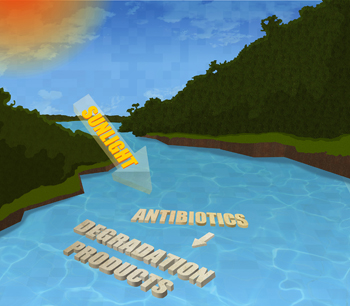
Photolysis can be considered the main process of elimination of antibiotics in surface waters. The photodegradation efficiency depends on conditions such as temperature, pH, composition of matrix, radiation source, latitude, etc. So, the knowledge of the photodegradation pathways, kinetics, acute toxicity, transformation products and antimicrobial activity is essential to predict the behavior and the environmental impact of these pollutants in natural waters. Details are presented in the Article Photolytic Degradation of Chloramphenicol in Different Aqueous Matrices Using Artificial and Solar Radiation: Reaction Kinetics and Initial Transformation Products by Alam G. Trovó, Vinicius A. B. de Paiva, Batuira M. da Costa Filho, Antonio E. H. Machado, Carlos A. de Oliveira, Renata O. Santos, Daniela Daniel on page 2007.
https://dx.doi.org/10.5935/0103-5053.20140185
Editorial J. Braz. Chem. Soc. 2014, 25(11), 1927
Articles J. Braz. Chem. Soc. 2014, 25(11), 1929-1938
Spectroscopic and Chromatographic Fingerprint Analysis of Composition Variations in Coffea arabica Leaves Subject to Different Light Conditions and Plant Phenophases
Fernanda Delaroza; Miroslava Rakocevic; Galileu Bernardes Malta; Roy Edward Bruns; Ieda Spacino Scarminio
How to cite this article
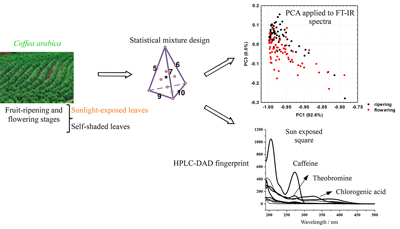
High-performance liquid chromatography with UV diode array detector (HPLC-UV-DAD) provides quantitative information for planning more detailed analysis. Coffea arabica leaves exposed to sun have higher caffeine contents than shaded ones. Coffea arabica leaves suffer more ecological stress exposed to sun than in shade. Light conditions have very different effects on Coffea arabica and yerba mate leaves. Lipid contents are higher in shaded leaves than those exposed to the sun.
https://dx.doi.org/10.5935/0103-5053.20140172
J. Braz. Chem. Soc. 2014, 25(11), 1939-1947
Synthesis and Characterization of Carboxyl-Substituted Polyanilines Doped with Halogenated Acids: Combining Conductivity with Solubility
Denice S. Vicentini; Rodrigo V. Salvatierra; Aldo J. G. Zarbin; Luiz G. Dutra; Marcus M. Sá
How to cite this article
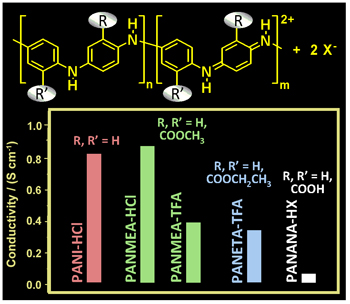
Copolymers of aniline with 2-substituted anilines bearing a variety of carboxyl groups were synthesized and characterized by several techniques. Some of the synthesized copolymers show moderate-to-high solubility in a diverse set of solvents and good-to-excellent conductivity.
https://dx.doi.org/10.5935/0103-5053.20140173
J. Braz. Chem. Soc. 2014, 25(11), 1948-1955
Chemometric Approach in Studying of the Retention Behavior and Lipophilicity of Potentially Biologically Active N-Substituted-2-phenylacetamide Derivatives
Gyöngyi Gy. Vastag; Suzana Lj. Apostolov; Borko M. Matijević; Aleksandar D. Marinković
How to cite this article

Chromatographic retention parameter of the investigated N-substituted-2-phenylacetamide derivatives obtained by reversed phase thin-layer chromatography (RP-TLC) could be used for the description of their lipophilicity and the chemometric methods used are able to reduce the dimensionality of the data and create a connection between large numbers of data obtained in different ways.
https://dx.doi.org/10.5935/0103-5053.20140174
J. Braz. Chem. Soc. 2014, 25(11), 1956-1964
Antioxidant Activities and Phenolic Compounds of Cornhusk, Corncob and Stigma Maydis
Jianwei Dong; Le Cai; Xiufang Zhu; Xing Huang; Tianpeng Yin; Haixian Fang; Zhongtao Ding
How to cite this article
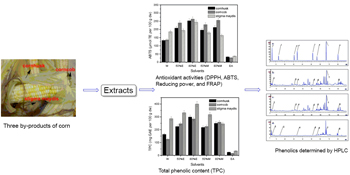
The total phenolic contents, total flavonoid contents, total ketosteroid contents, antioxidant activities, and phenolic composition of cornhusk, corncob, and stigma maydis were evaluated.
https://dx.doi.org/10.5935/0103-5053.20140177
J. Braz. Chem. Soc. 2014, 25(11), 1965-1974
Electrophilic Substitution of Dimethyl 1-Methylcarbazole-2,3-dicarboxylate: Synthesis of New b-Fused Carbazoles as Potential Antitumor Agents
Norbert Haider; Brigitte Marian; Thomas Nagel; Markus Tarnai; Katharina Tropper
How to cite this article

1-Methylcarbazole-2,3-dicarboxylic acid dimethyl ester, a key intermediate in the synthesis of b-fused carbazoles can be selectively brominated or nitrated at position 6. Subsequent annulation of a pyridazine or pyrrole ring with basic side chains gives new compounds with cytotoxic activity against human tumor cells.
https://dx.doi.org/10.5935/0103-5053.20140178
J. Braz. Chem. Soc. 2014, 25(11), 1975-1983
Cold Vapor Atomic Absorption Spectrometric Determination of Cadmium after Solid Phase Extraction on Modified TiO2 Nanoparticles
Reza Hafezi Moghaddam; Ali Mohammad Haji Shabani; Shayessteh Dadfarnia; Neda Baghban
How to cite this article
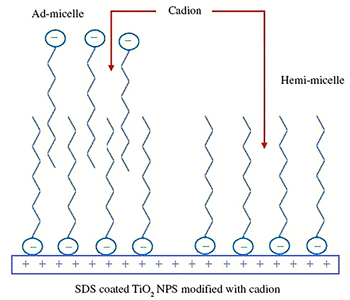
A solid phase extraction method using cadion immobilized on sodium dodecyl sulfate-coated TiO2 nanoparticles combined with cold vapor atomic absorption spectrometry has been proposed for the separation, preconcentration and determination of cadmium.
https://dx.doi.org/10.5935/0103-5053.20140179
J. Braz. Chem. Soc. 2014, 25(11), 1984-1992
Kinetic and Thermodynamic Parameters of Biodiesel Oxidation with Synthetic Antioxidants: Simplex Centroid Mixture Design
Dionisio Borsato; Diego Galvan; Jaqueline L. Pereira; Juliane R. Orives; Karina G. Angilelli; Rodolfo L. Coppo
How to cite this article
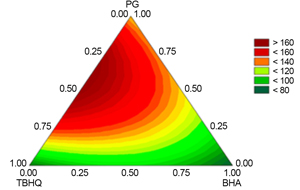
The response surface demonstrates that mixtures containing the antioxidants tert-butylhydroquinone (TBHQ) and propylgallate (PG) provide activation energy (Ea, for biodiesel oxidation reaction) greater than 160 kJ mol-1.
https://dx.doi.org/10.5935/0103-5053.20140182
J. Braz. Chem. Soc. 2014, 25(11), 1993-1999
Evaluation of the Bioaccessability of Ca, Fe, Mg and Mn in Ground Coffee Infusions by in vitro Gastrointestinal Digestion
Ewelina Stelmach; Pawel Pohl; Anna Szymczycha-Madeja
How to cite this article
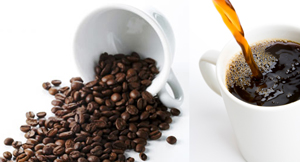
Bioaccessibility of Ca, Mg, Mn and Fe in ground coffee brews was assessed using in vitro gastrointestinal digestion. Among studied metals, Mg was the most bioaccessible (62%). The bioaccessibilities of Ca (42%) and Fe (43%) were similar but individual results for both metals varied widely. The least bioaccessible metal was Mn.
https://dx.doi.org/10.5935/0103-5053.20140183
J. Braz. Chem. Soc. 2014, 25(11), 2000-2006
Simultaneous Degradation of Hexazinone and Diuron Herbicides by H2O2/UV and Toxicity Assessment
Alysson S. Martins; Tanare C. R. Ferreira; Renato L. Carneiro; Marcos R. V. Lanza
How to cite this article

The central composite design done for simultaneous degradation of diuron (DR) and hexazinone (HX) via H2O2/UV showed that the H2O2 concentration is more influential than pH. The optimum degradation conditions provided a total organic carbon removing of 96.4% and the reduction in toxicity.
https://dx.doi.org/10.5935/0103-5053.20140184
J. Braz. Chem. Soc. 2014, 25(11), 2007-2015
Photolytic Degradation of Chloramphenicol in Different Aqueous Matrices Using Artificial and Solar Radiation: Reaction Kinetics and Initial Transformation Products
Alam G. Trovó; Vinicius A. B. Paiva; Batuira M. Costa Filho; Antonio E. H. Machado; Carlos A. Oliveira; Renata O. Santos; Daniela Daniel
How to cite this article

The photodegradation of chloramphenicol (CAP) in different aqueous media using solar and artificial irradiation was evaluated, being determined the reaction kinetics and initial transformation products.
https://dx.doi.org/10.5935/0103-5053.20140185
J. Braz. Chem. Soc. 2014, 25(11), 2016-2025
Single Drop Microextraction: a Sensitive Multiresidue Method for Determination of Pesticides in Water Using GC/ECD
Carlos E. S. Soares; Antônio A. Neves; Maria E. L. R. de Queiroz; André F. Oliveira; Anna I. G. Costa; Roberta C. Assis; Carlos E. O. Andrade
How to cite this article
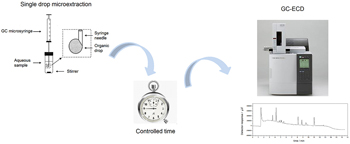
The extraction of analytes by single drop microextraction (SDME) is not exaustive and the amount extracted is dependent on the contact time. Migration of analytes (pesticides) of the aqueous phase to the organic phase followed by diffusion kinetics model Noyes-Whitney.
https://dx.doi.org/10.5935/0103-5053.20140186
J. Braz. Chem. Soc. 2014, 25(11), 2026-2031
Synthesis and Structure-Activity Relationship of a WO3 Catalyst for the Total Oxidation of BTX
Rosana Balzer; Valderez Drago; Wido H. Schreiner; Luiz F. D. Probst
How to cite this article

Catalytic oxidation of benzene, toluene and xylene (BTX), to CO2 and H2O promoted by WO3 catalyst.
https://dx.doi.org/10.5935/0103-5053.20140187
J. Braz. Chem. Soc. 2014, 25(11), 2032-2038
A Green Approach for the Determination of Selected Anti-Diabetic Drugs in Pharmaceutical Formulation by Transmission FTIR Spectroscopy
Faiza Fahim; Ayesha Naseer; Shakil Ahmed; Syed Tufail H. Sherazi; Muhammad I. Bhanger
How to cite this article

A simple, rapid, inexpensive, direct and green FTIR methods for the analysis of two antidiabetic drugs. Such methods have a strong potential to replace classical methods in quality assurance/quality control (QA/QC) in pharmaceutical preparations.
https://dx.doi.org/10.5935/0103-5053.20140188
J. Braz. Chem. Soc. 2014, 25(11), 2039-2047
Synthesis and Application of Magnetic Nanoparticle Supported Ephedrine as a New Sorbent for Preconcentration of Trace Amounts of Pb and Cu in Water Samples
Somayeh Mohammadi; Gholamreza Khayatian; Bahareh Atashkar; Amin Rostami
How to cite this article

A new magnetic iron oxide nanoparticle for extraction and determination of lead and copper ions from water samples was synthesized and characterized with different techniques. This adsorbent has not been used before for the separation and preconcentration of trace amount of metal ions.
https://dx.doi.org/10.5935/0103-5053.20140189
J. Braz. Chem. Soc. 2014, 25(11), 2048-2053
Preconcentration and Determination of Organochlorine Pesticides in Seawater Samples Using Polyaniline/Polypyrrole-Cellulose Nanocomposite-Based Solid Phase Extraction and Gas Chromatography-Electron Capture Detection
Ali Mehdinia
How to cite this article
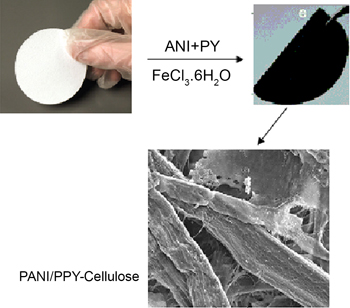
Aniline and pyrrole monomers were added onto a filter paper, and then oxidant was added to the mixture. During the polymerization of aniline and pyrrole, they penetrated into the cellulose structure of the filter paper and it changed to a black color. Thus, a nanocomposite of PANI/PPY-cellulose was made and used as a solid phase extraction sorbent.
https://dx.doi.org/10.5935/0103-5053.20140190
J. Braz. Chem. Soc. 2014, 25(11), 2054-2062
Analytical Performance of New Mixed Oxide (SiO2/TiO2/ZnO)-Based Sorbent for Development of a Reliable Mechanized Enrichment System for Copper Determination in Water and Food Samples
César R. T. Tarley; Thiago M. Rodrigues; Felipe A. Gorla; Talitha O. Germiniano; Joao C. Alves; Camila S. Inagaki; Vitor H. Paschoal; Antônio A. S. Alfaya; Mariana G. Segatelli
How to cite this article

A new mixed oxide (SiO2/TiO2/ZnO)-based sorbent was evaluated for copper preconcentration and determination in water and food samples. The sorbent presents high reusability and proposed preconcentration method shows satisfactory sample consumption and limit of detection.
https://dx.doi.org/10.5935/0103-5053.20140191
J. Braz. Chem. Soc. 2014, 25(11), 2063-2072
Flame Atomic Absorption Spectrometric Determination of Pb(II) and Cd(II) in Natural Samples After Column Graphene Oxide-Based Solid Phase Extraction Using 4-Acetamidothiophenol
Mohammad R. Pourjavid; Masoud Arabieh; Ali A. Sehat; Mohammad Rezaee; Majid H. Hosseini; Seyed R. Yousefi; Mohammad R. Jamali
How to cite this article
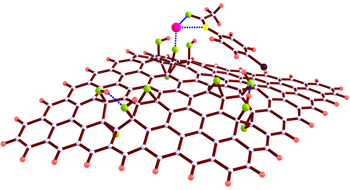
SPE-FAAS system was used for preconcentration and determination of Pb(II) and Cd(II) ions by synthesized graphene oxide and 4-acetamidothiophenol as adsorbent and chelating reagent, respectively.
https://dx.doi.org/10.5935/0103-5053.20140193
J. Braz. Chem. Soc. 2014, 25(11), 2073-2079
Diaquabis(L-phenylalaninato)nickel(II) Encapsulated in Zeolite: An Efficient Heterogeneous Catalyst System for the Oxidation of Cyclohexene, Toluene and Ethyl Benzene
Massomeh Ghorbanloo; Somayeh Ghamari; Nahid Shahbakhsh; Seik Weng Ng
How to cite this article
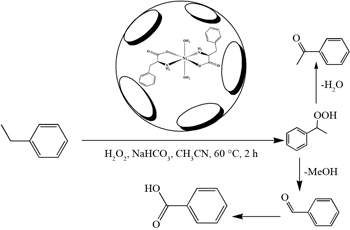
Diaquabis(L-phenylalaninato)nickel, when encapsulated in zeolite, exhibited high catalytic activity and selectivity when cyclohexene, ethyl benzene and toluene were oxidized by hydrogen peroxide.
https://dx.doi.org/10.5935/0103-5053.20140194
J. Braz. Chem. Soc. 2014, 25(11), 2080-2087
Novel Luminescent Eu3+-Indandionate Complexes Containing Heterobiaryl Ligands
Joao B. M. Resende Filho; Jannine C. Silva; Juliana A. Vale; Hermi F. Brito; Wagner M. Faustino; José G. P. Espínola; Maria C. F. C. Felinto; Ercules E. S. Teotonio
How to cite this article
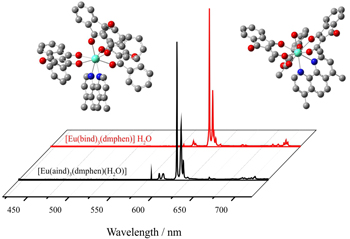
Novel Eu3+-indandionate complexes containing 1,10-phenanthroline and 4,7-dimethyl-1,10-phenanthroline as neutral ligands have been reported. The luminescent and structural properties of these compounds have been investigated using experimental and theoretical methods.
https://dx.doi.org/10.5935/0103-5053.20140197
J. Braz. Chem. Soc. 2014, 25(11), 2088-2093
Synthesis of 1,2,3-Triazolium-Based Ionic Liquid and Preliminary Pretreatment to Enhance Hydrolysis of Sugarcane Bagasse
Arturene M. L. Carmo; Pedro H. F. Stroppa; Roberta C. N. R. Corrales; Anna B. N. Barroso; Viridiana S. Ferreira-Leitao; Adilson D. Silva
How to cite this article

Sugarcane bagasse was pretreated with three novel chemically inert 1,2,3-triazolium-based ILs and the effect of pretreatment on lignocellulosic biomass showed that the pretreatment promoted structural changes in the fiber increasing the surface exposure of the bagasse samples.
https://dx.doi.org/10.5935/0103-5053.20140198
J. Braz. Chem. Soc. 2014, 25(11), 2094-2101
LC-PDA and LC-MS Studies of Donepezil Hydrochloride Degradation Behaviour in Forced Stress Conditions
André L. M. Ruela; Mariane G. Santos; Eduardo C. Figueiredo; Gislaine R. Pereira
How to cite this article

LC-MS and LC-PDA were employed to appraise the intrinsic stability of donepezil. The drug and their degradation products were separated and detected after forced degradation studies.
https://dx.doi.org/10.5935/0103-5053.20140199
J. Braz. Chem. Soc. 2014, 25(11), 2102-2107
Decomposition of Five Phenolic Compounds in High Temperature Water
Yan Cheng; Qingzhong Xu; Jing Liu; Changsheng Zhao; Fumin Xue; Yuzhong Zhao
How to cite this article
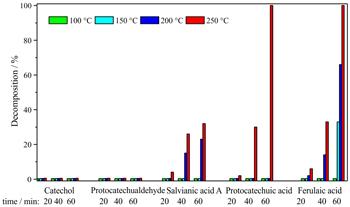
The decomposition of three phenolic acid compounds (salvianic acid A, protocatechuic acid and ferulaic acid) increased with rising temperature and the acids became less stable with longer heating time. Reaction temperature and time showed relatively little effect on the decomposition of catechol and protocatechualdehyde.
https://dx.doi.org/10.5935/0103-5053.20140201
J. Braz. Chem. Soc. 2014, 25(11), 2108-2120
Plumeran Alkaloids and Glycosides from the Seeds of Aspidosperma pyrifolium Mart.
Patrícia C. N. Nogueira; Renata M. Araújo; Glauce S. B. Viana; Dayane P. de Araújo; Raimundo Braz Filho; Edilberto R. Silveira
How to cite this article
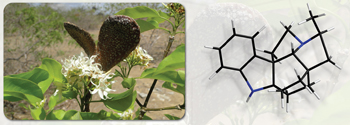
An unknown compound, in addition to seven known alkaloids and three glycosides from the ethanol extract of seeds of Aspidosperma pyrifolium are reported. The nuclear magnetic resonance data assignments of several alkaloids reported in the literature are suggested to be revised, and the antinociceptive and anti-inflammatory activities are presented.
https://dx.doi.org/10.5935/0103-5053.20140204
Short Report J. Braz. Chem. Soc. 2014, 25(11), 2121-2124
Phenolic Compounds from Clinopodium tomentosum (Kunth) Govaerts (Lamiaceae)
Mariela Beatriz Vera Saltos; Blanca Fabiola Naranjo Puente; Nicola Malafronte; Alessandra Braca
How to cite this article

Phytochemical investigation of the leaf extracts of Clinopodium tomentosum (Lamiaceae) allowed the isolation of one new tartaric acid derivative, together with twelve known compounds.
https://dx.doi.org/10.5935/0103-5053.20140181
J. Braz. Chem. Soc. 2014, 25(11), 2125-2132
Palladium- and Copper-Catalyzed Highly Selective Mono-Coupling Between 2,6-Diiodoanisoles and Terminal Alkynes in the Production of Alkynylated Anisoles as Potential Precursors of Benzo[b]furans
Allan F. C. Rossini; Carlise Frota; Gleison A. Casagrande; Lucas Pizzuti; Cristiano Raminelli
How to cite this article

Palladium- and copper-catalyzed highly selective mono-coupling between 2,6-diiodoanisoles and terminal alkynes has provided alkynylated 2-iodoanisoles as useful building blocks with potential application in the synthesis of functionalized benzo[b]furans.
https://dx.doi.org/10.5935/0103-5053.20140200
Online version ISSN 1678-4790 Printed version ISSN 0103-5053
Journal of the Brazilian Chemical Society
JBCS Editorial and Publishing Office
University of Campinas - UNICAMP
13083-970 Campinas-SP, Brazil
Free access











